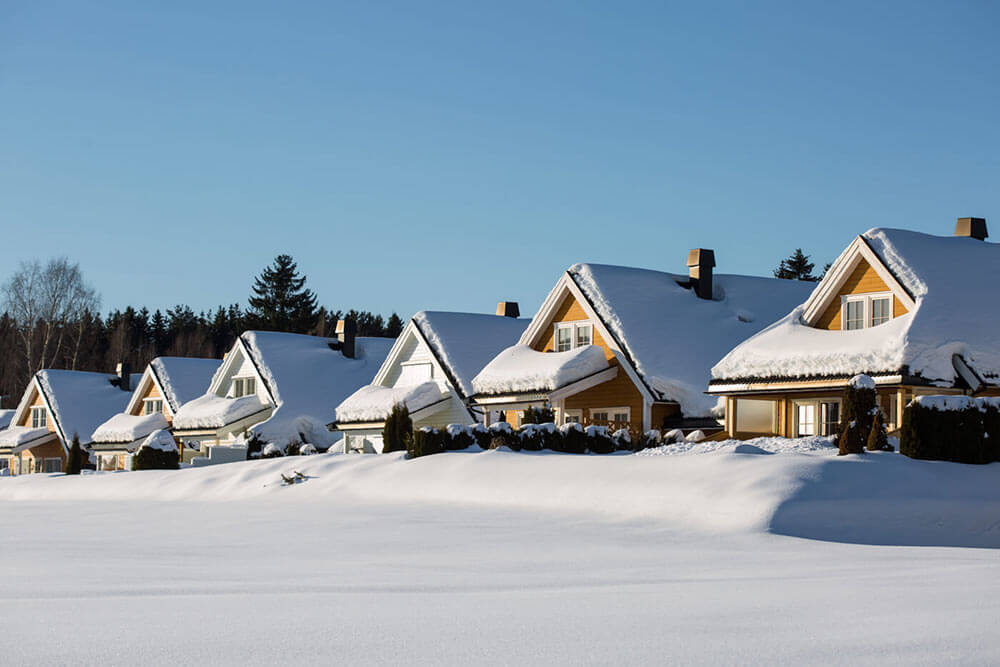Canada has a wide variety of climates which means different amounts and consistencies of snowfall. Depending on the climate zone you live in, your roof should be able to withstand the expected amount of snow for your region.
Come winter, keep an eye on the forecast to be aware of when big storms could arise. Examine your roof ahead of snowstorms to determine if there will be significant buildup in specific areas or over the whole roof. It’s also important to be mindful of where the snow could land if shifted by the wind or when it starts to melt. Doorways and walkways can be a potential hazard area if the snow from the roof comes down.
Signs pointing to a potential roof collapse How to prevent roof collapse
Signs pointing to a potential roof collapse
- If you notice any of these warning signs in your home, your roof could be in danger of collapsing:
- Ceiling is sagging
- Cracks have appeared in ceilings or interior walls
- Roof leaks
- Unusual cracking or popping sounds
- Doors and windows that won’t close or are hard to open
- Utility pipes showing signs of bending or warping
How to prevent roof collapse
- Perform regular maintenance on your roof - ensure necessary repairs are done and that it’s in a good shape
- Keep your roof clear of snow. If you’re able to access your roof from the ground, you can use a snow rake (similar to a regular rake but with a telescopic handle and no prongs) to pull snow off the roof and onto the ground. Otherwise, your best bet is to hire a qualified (and insured) snow removal company to ensure it’s done correctly, and no one gets injured
- Install heating cables in the spring or fall which will speed up the snow melting process
- Keep roof drains, gutters and downspouts clear and unblocked by cleaning your gutters ahead of winter
- Avoid piling snow against downspouts
You can also use these tips to protect other structures on your property, like your garage or shed.
If your roof does collapse due to snow load, your insurer will most likely investigate to ensure that it was caused by the weight of the snow and ice and not from a defect or wear and tear. Review your policy ahead of time to know if you're covered in the event of a roof collapse.
